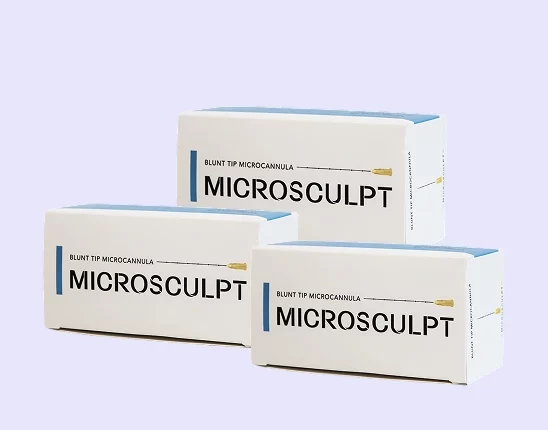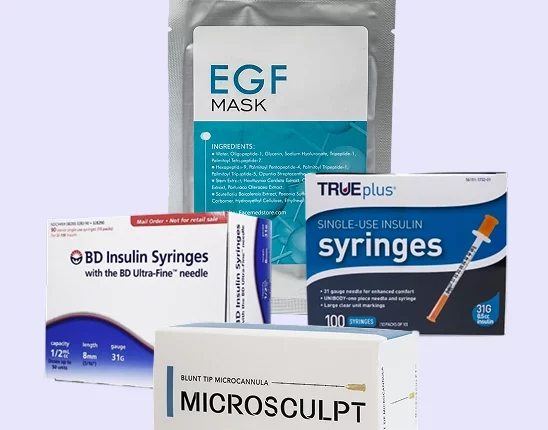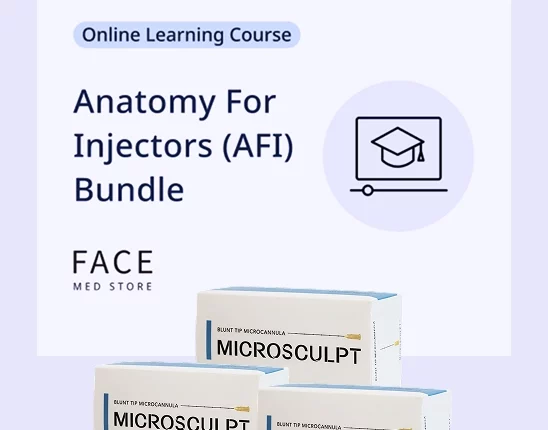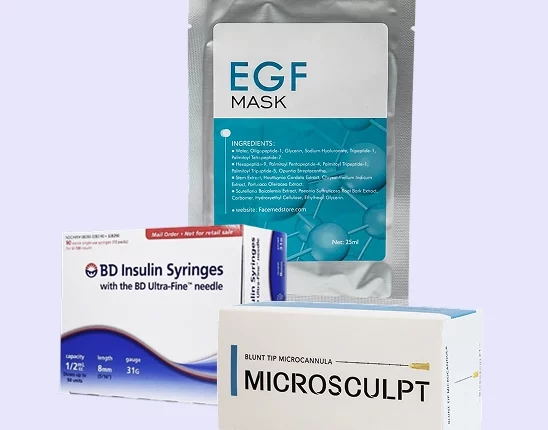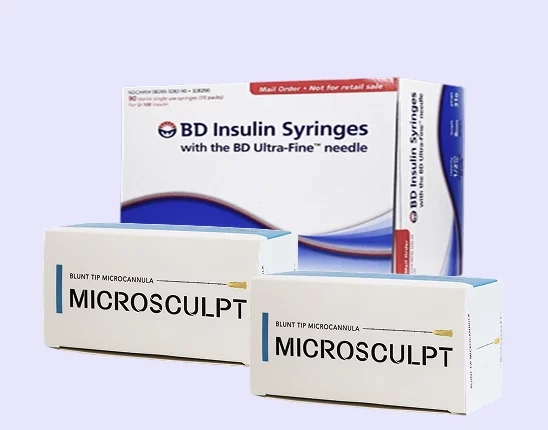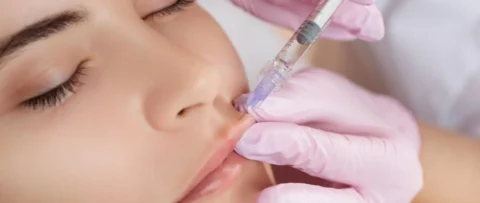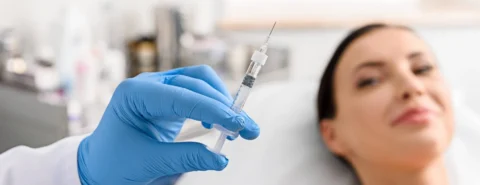Many spas, cosmetic offices, and doctors offer dermal filler injection services to their patients. Each and everyone has their unique way of performing these procedures. Many of these offices, however, rely primarily on sharp tip dermal fillers. Many more are beginning to realize the many advantages of blunt tip Microcannula treatment. Even though the Microcannula technique is safer, effective, and less painful, doctors still use sharp-tipped needles.
In this article, we dive into the advantages and disadvantages of both Sharp Tipped needles and Microcannula technique. We want to give you a clear understanding of why so many practitioners are switching over and why patients love them for it. Sharp tipped needles aren’t all that bad, however, with a few advantages still.
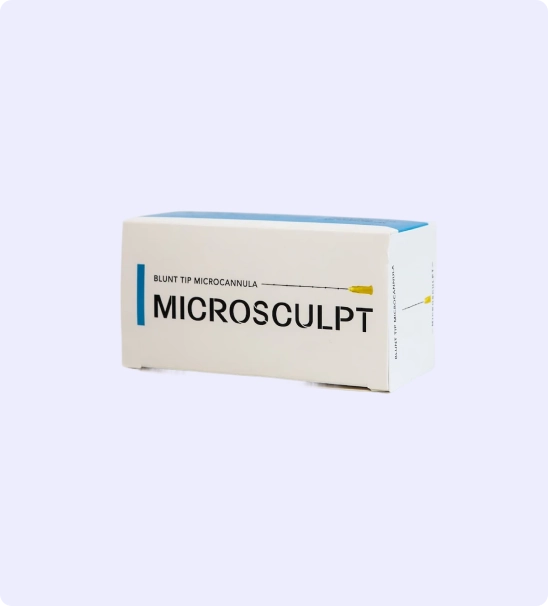
INJECTIONS YOUR PATIENTS WILL LOVE! CODE “20OFF” TAKES 20% OFF YOUR FIRST ORDER!
Microcannulas are a tool that every great injector must master. Patients want quick results with no downtime. Our microcannulas are high quality and a fraction of the price of our competitors!
You can create an account here.
What Is The Microcannula Technique?
The Microcannula technique has reconstructed the cosmetic industry and offered doctors with a novel, innovative way of providing facial fillers injections. The approach allows physicians to slip the blunt tip cannula under the patient’s skin sleekly and without tearing the epidermis. Patients looking to enhance their appearance can now do so without having to endure a painful procedure that has nasty side effects connected with sharp-tipped needles.
Essentially, microcannula is a modernized variant of the traditional hypodermic needles used to administer injection treatments. Rather than having a sharpened tip, this technique utilizes a dull end that makes an injection procedure much more pleasant. It has a bendable shaft, allowing it to move quickly compared to a traditional needle’s stiffness that restricts it.
What’s The Procedure?
Microcannula (Blunt Tipped Needle)
At the source of the filler injection using Microcannula, your Doctor creates a minute entry point in your skin using a precise, sharp needle. This is a vital step since the Microcannula has a blunt tip and is incapable of penetrating the skin by itself. The insertion location is minimal and does not cause substantial pain or bleeding.
Then the Doctor skillfully inserts the Microcannula into the small opening and glides it under your skin to reach the sections of filler injection. The Microcannula then slides within the spaces connecting the tissue. It can be moved under the skin without any injuries to tissue. Patients typically do not feel much pain, if any, as the Doctor guides it under their skin.
Sharp Tipped Needle (Hypodermic Needle)
Sharp tip needles use a skinny, short, sharp needle to inject dermal fillers. Multiple injection points are required when using needles, which can increase the risk of hitting a vein. If a vein is hit with a needle, there’s a higher chance of bruising after the procedure.
Is There Pain?
Microcannula
Using the Visual Analog Scale for pain assessment during the injections was quite different. The pain was described as 3 (mild) for injections with the microcannula. Patient discomfort is reduced to the level where topical anesthesia alone consistently suffices even for injection of the lips, and local nerve blocks are not necessary.
Sharp Tipped
That pain level increased to 6 (moderate) for injections with the hypodermic needle. Bruising and ecchymosis were more marked following the use of the hypodermic needle.
What’s The Recovery Time?
Microcannula and Hypodermic needles scored pretty close to each other. Overall, the Global Aesthetic Improvements Scale (GAIS) results were excellent (55%), moderate (35%), and somewhat improved (10%) one month after the procedure, decreasing to 23%, 44%, and 33%, respectively, at the six-month evaluation. There were no significant differences in the GAIS score between the microcannula and the hypodermic needle. However, pain during the recovery can be higher after the use of sharp-tipped needles.
Advantages of Microcannula and Sharp
Advantages of Microcannulas
Utilizing Microcannula for filler injection offers numerous advantages over hypodermic needles, such as:
- Accuracy: When using a blunt-tipped cannula, a Doctor can inject filler more accurately to achieve the desired results.
- Increased Visible Recovery: Sharp needles tend to cause tearing, which causes bruising and is hard to avoid. The blunt-tipped cannula technique reduces the chance of swelling and bruising, requiring minimum downtime.
- More dependable technique: -While a blunt tipped microcannula can enter an artery, it is important to be aware of regional anatomy. Both needles and microcannulas have a risk of vascular compromise, however it the the opinion of this author that it’s less with microcannulas.
- Tremendous Flexibility: Due to its flexibility, the microcannula can perform filler injections in multiple locations from a single point of entry. Many areas regularly treated with fillers are cheeks, marionette lines, lips, temples, hands, nose, nasolabial folds, and the pre-jowl regions.
- Less risk of bleeding and bruising: Sharp needles can puncture veins and arteries below the skin, a blunt cannula will push them aside.
- One Point of Entry. Conventional needles are stiff and pierce deep within the skin. Microcannula, however, is flexible and possesses a blunt tip. Instead of piercing through the tissues, a cannula opens up a path between the skin. This method allows for less damage to occur to the inner tissue, which reduces bruises and pain.
- Minimal pain: Having many shots with sharp needles around the lips can feel painful and sore. Many people describe needle injections as bothersome, while patients who are injected through using a cannula describe the feeling as “pressure.”
Advantages of Sharp Tipped Needle
Although the cannula method of injecting dermal fillers offers many benefits, there are still cases when sharp needles can be the right choice. When a minimal amount of filler for touchups are injected in small places like the cupid’s bow of the upper lip or the temples, a needle is still the best option.
INJECTIONS YOUR PATIENTS WILL LOVE! CODE “20OFF” TAKES 20% OFF YOUR FIRST ORDER!
Microcannulas are a tool that every great injector must master. Patients want quick results with no downtime. Our microcannulas are high quality and a fraction of the price of our competitors!

Disadvantages of Microcannula and Sharp
Disadvantages of Microcannulas
This study goes on to describe the potential of adverse effects. Of the 666 filler procedures using the microcannula technique, three treatments (0.5%) produced adverse events on the day of service, and during the two-week follow up 32 procedures (4.8%) produced adverse effects. In total, only 5.4% of treatments produced adverse events.
Cannulas may not be ideal for filling acne scars or injecting extremely fine lines located on the skin’s superficial surface. Microcannulas, since they are blunt-tipped, cannot make their entry point, requiring the use of a sharp needle to start an entry point.
Disadvantages of Hypodermic Needles
A risk concerning the sharp needle is not just penetrating the blood vessel but shooting the filler into it, leading to vascular occlusion. That can result in much more severe complications. Again, there are specific standards that practitioners take to ensure that this doesn’t happen; however, it is something that must be acknowledged when using a needle.
Greater Pain. Using a sharp needle will create a lot of tissue, tearing only always. This tearing will cause pain for the patient and create a more unpleasant experience.
More Bruising. The needle won’t slide easily and will cut veins and tear the tissue causing more bleeding, which will lead to bruising that takes a while to disappear.
Less Predictable. It’s difficult for practitioners to know exactly what the damage the needle will cause.
When To Use Microcannulas
There are many benefits to using microcannulas in sensitive invasive procedures. Here are a few examples of where microcannulas becomes invaluable to Doctors.
Vascular Compression
Technique matters greatly for evading vascular compression, but blunt tips make the probabilities of it happening much less possible. To stop unnecessary extrusion force when injecting fillers through blunt microcannulas that are invariably longer than the typical 13 mm to 19 mm sharp needles, a larger gauge is selected.
Ecchymosis
The risk of penetrating a blood vessel with a correctly used blunt microcannula is significantly reduced. Chances of ecchymosis, which may be recorded in regions such as the nasojugal fold, the upper eyelid, and the pre-jowl sulcus.
Collagenesis
It has been suggested that a blunt microcannula multiple times through an area may stimulate collagenases. This theory is persuasive by extrapolation from the collagenases observed with repeated back-and-forth passage of cannulas during liposculpture.
If you’re a doctor who wants to purchase microcannulas, then stop by FACEMed’s Store for all our available microcannulas. We carry multiple sizes to suit whatever your needs are.
Where Can You Get Them?
As many cosmetic doctors and patients can attest, swapping the sharp needle for a blunt tip microcannula improves the outcomes of a procedure. The wide variety of microcannula choices has allowed doctors to perform both cosmetic and more invasive procedures harmlessly. The Microcannula technique is available in five different sizes. At FACE Medical Supply, you can find 18, 22, 25, 27, and 30 gauge microcannulas at various lengths. We sell high-quality microcannulas that will perform any filler injection task you need. The results show that microcannula injections are the future.
These microcannulas can be safely employed with a variety of cosmetic methods and fillers of any type and viscosity, including Lip augmentation, soft augmentation of the facial filling, plumping cheeks, wrinkle-reducing, plumping cheeks, reducing saggy skin and bags under the eye.
—
Sources
L;, Fulton J;Caperton C;Weinkle S;Dewandre. “Filler Injections With the Blunt-Tip Microcannula.” Journal of Drugs in Dermatology : JDD, U.S. National Library of Medicine, pubmed.ncbi.nlm.nih.gov/23135654/.
Loghem, van, et al. “Cannula Versus Sharp Needle for Placement of Soft Tissue Fillers: An Observational Cadaver Study.” OUP Academic, Oxford University Press, 15 Dec. 2016, academic.oup.com/asj/article/38/1/73/2698769#110268380.
-
 Microcannula Multi-Gauge Precision Set
Microcannula Multi-Gauge Precision Set -
 Microcannula Complete Injection System
Microcannula Complete Injection System -
 Microcannula Size Progression Training Kit
Microcannula Size Progression Training Kit -
 Microcannula Professional Starter Kit
Microcannula Professional Starter Kit -
 Microcannula Volume Practice Pack
Microcannula Volume Practice Pack -
 23 gauge 50 mm (2 inch) Microcannulas
23 gauge 50 mm (2 inch) Microcannulas -
 22 Gauge 100 mm (4 inch) Microcannulas.
22 Gauge 100 mm (4 inch) Microcannulas. -
 27 Gauge 38 mm (1.5 inch) Microcannulas
27 Gauge 38 mm (1.5 inch) Microcannulas -
 25 Gauge 38 mm (1.5 inch) Microcannulas
25 Gauge 38 mm (1.5 inch) Microcannulas

